The Berkshire: an enchanting experience
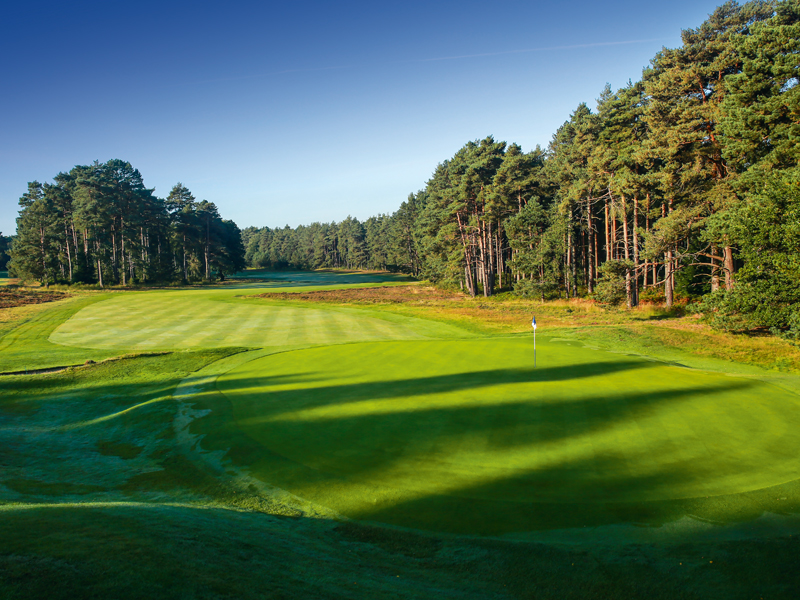

Nick Bonfield spends a day at The Berkshire, the historic club near Ascot which is home to some of Herbert Fowler's finest work
There are a select few clubs south of the border that present the quintessential English golfing experience. But what does that entail? Well, in my mind, it’s a day out that starts with a hearty breakfast, features 36 holes of pristine heathland golf with a carvery lunch in between and concludes with a pint of ale on a large-scale patio overlooking an expanse of greenery.
You may well have a different vision, perhaps one interspersed with parkland or links layouts, but even if your interpretation varies from mine, there can be no doubt that The Berkshire provides an experience that’s virtually second to none when it comes to ticking all the boxes for a great golfing excursion.
The Berkshire Golf Club – situated near Ascot, less than 20 miles from central London – was founded in 1928. Its two courses, the Red and Blue, were constructed by the Office of Crown Lands on land that hosted Queen Anne’s hunting parties in the 17th and 18th centuries.
The man responsible for both layouts was Herbert Fowler, a celebrated architect whose other work included the construction of the Old course at Walton Heath, the renovation of Saunton’s East course and the extension of the famous 18th at Pebble Beach Golf Links on America’s west coast.
In 1930, the golf writer Bernard Darwin, another who, like Fowler, excelled in his field, commented: “I take my hat off to Fowler with profound respect. His art has mellowed with experience and has gained something in variety, in subtleness and in picturesqueness. He has added two to the select number of unquestionably first-class inland courses.” Those words, much like The Berkshire, have stood the test of time.
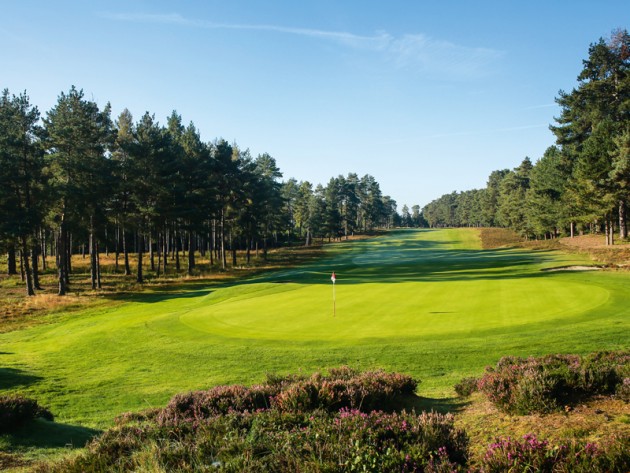
The Berkshire has long been associated with amateur golf, and its position as one of the most frequent hosts of prestigious events in the unpaid ranks is testament to its quality. Each year, the club stages the Lady Astor Salver for Ladies, inaugurated in 1951, and the Berkshire Trophy for Gentleman, which started out in 1946.
Get the Golf Monthly Newsletter
Subscribe to the Golf Monthly newsletter to stay up to date with all the latest tour news, equipment news, reviews, head-to-heads and buyer’s guides from our team of experienced experts.
The likes of Nick Faldo, Sandy Lyle and Ross Fisher have all been victorious over the years. This year, the club hosted qualifying for the Senior Open Championship and the Ricoh Women’s British Open, and has recently been announced as the home of the 2017 English Amateur, which will take place over both courses.
A common subject of debate for all those who’ve been fortunate enough to play both courses at The Berkshire centres around which one is better. In Golf Monthly’s current Top 100 UK & Ireland rankings, the Red is 43rd and the Blue 57th. Only nine clubs have two or more courses in our top 100. On balance, the Red narrowly pips the Blue, but both remain varied, unspoiled, picturesque, well-conditioned and hugely enjoyable to play.
The Red
The Red course is extremely unusual in terms of its make up, with six par 3s, six par 4s and six par 5s on the scorecard. It’s one thing having an unconventional course set-up, though, and another blending all the holes together to ensure they work in unison with one another. Indeed, the flow and routing is one of the strongest features of the Red.
It’s slightly more undulating than its counterpart, allowing for more variation. The balance here is spot on – for every downhill drive there’s an uphill approach; for every tough par 3 there’s a reachable par 5. Wonderful green complexes await you at every hole, which often feature clever bunkering, mounds and subtle run-off areas and always house pure putting surfaces.
You have a good chance to get off to a strong start, with the stroke index 18 par-3 2nd sandwiched between par 5s at 1 and 3. However, the opening drive is somewhat daunting, courtesy of the heather-lined fairway, and the 2nd green sits a good distance above the level of the tee.
The course soon strikes back, with the stroke index one par-4 4th and the par-3 5th, which requires a mid- to long-iron to a sunken green surrounded by slopes and sand, forming a tricky partnership in the middle of the front nine.
The standout hole on the front side is the par-4 6th, which is further proof that two-shotters don’t need to be long to be challenging. It’s a lovely downhill dogleg right that demands a sound strategy off the tee. Many will be tempted to open their shoulders in an attempt to fade the ball round the corner, but the percentage play is a lay-up to the apex of the dogleg.
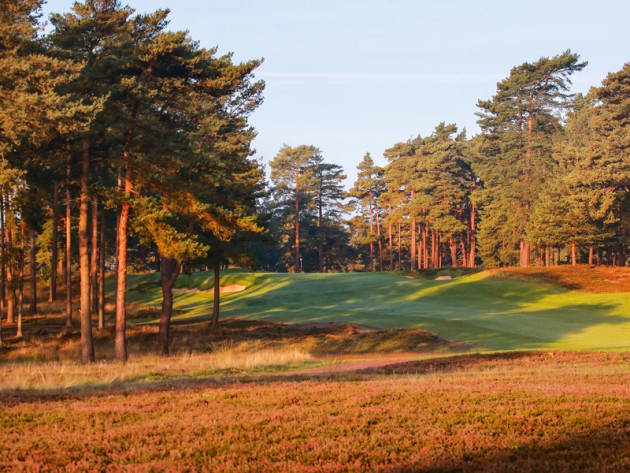
From the ideal spot, you’ll face an approach of roughly 140 yards to a tiered green with a severe slope at the front and a deep, magnetic bunker to the right. If you want to make par on this 360-yard hole, you really have to work for it.
The front nine comes to a close with a pine tree-flanked par 5 that curves gently to the left. Bigger hitters will be able to get home in two shots, but if you’re wayward off the tee or left with your approach to the green, trouble awaits. It’s a good end to an outward nine which, on balance, is probably a touch easier than the run back towards the clubhouse.
The back nine starts with arguably the toughest par 3 on the course, which plays over a seemingly endless valley to a slanted green. If the wind whips up, it can be as much as a 3-wood off the tips, which isn’t ideal given the terminal slope to the right of the surface.
But, as always on the Red, you don’t have to wait long for an opportunity to rectify your scorecard. The shortish par 4s at 11 and 12 (below) provide some respite, while the lovely downhill par-5 13th presents a good opportunity for a birdie if you get your drive away.
One of the strongest holes on the back nine is the par-4 14th, which is the longest two-shotter on the course at 434 yards. The driving area is relatively generous, but a ditch is in play for the longer hitters. That means approach shots are at least a mid-iron, which you’ll need to strike well to find a narrow, raised green that slopes from back to front.
While the first three holes are good scoring opportunities, the last three, in an asymmetrical twist, are potential card wreckers. This stretch starts with the 221-yard par-3 16th, takes in the longest par 5 on the course, where golfers must hit three good shots and traverse two ditches in order to find the putting surface, and finishes with a par 3 surrounded by an array of potential hazards.
Regardless of your finish, though, you’ll reflect on an enchanting experience as you stroll towards the clubhouse for a post-round beer, or one of the best carveries in golf.
The Blue
The Blue course has a more conventional scorecard, and the general consensus is that it’s more challenging and slightly less visually appealing than its esteemed peer. It is generally flatter with less elevation changes, but still features many parallels with the Red. You really notice the subtlety and attention to detail of Fowler’s work on this layout, with trouble spots and hazards expertly created using the natural shape and contours of the land.
The 1st hole – one of the harder openers in golf – is a prime example. It’s a brute of a par 3 that plays over an ocean of heather, and often into a left-to-right wind. Cleverly, most of the trouble is short right to catch the weak fade, but if you turn the ball over too much from right to left you’ll find sand back left. The hole calls for a fade – a product of the shape of the green – but overdo it at your peril. It’s cleverly crafted and testament to the designer’s skill.
The 1st, however, is by no means indicative of the difficulty of a front nine that offers a number of scoring opportunities. These come in the form of a series of short but quaint par 4s at 2, 5, 7 and 9 and the reachable par 5s at 3 and 6.
The driving zone on the 476-yard 6th is generous, but a ditch starts some 200 yards short of the green on the left side of the fairway and meanders up towards the putting surface. The next hole is a real gem, with a fairway that bends sharply to the left from the apex of its dogleg to a narrow green fronted by two imposing bunkers.
The hardest hole on the course follows at 8 – a long, narrow and uphill par 4 with a proportionally small green at the end – before the gentle but well-designed uphill par-4 9th rounds out the nine. You’ll hope to be ahead of the curve at this point, as the back nine presents far fewer scoring opportunities.
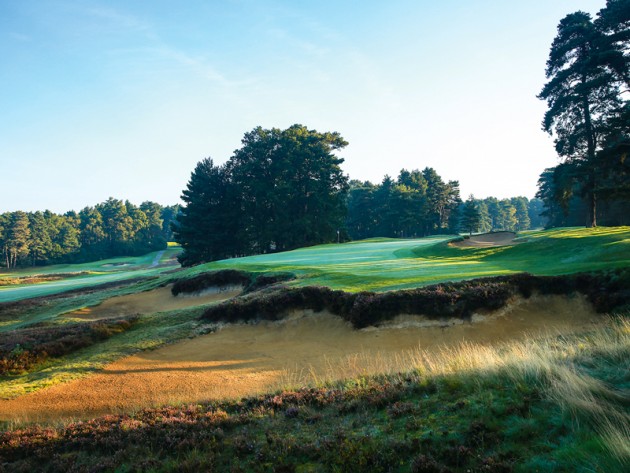
The recently renovated downhill par-3 10th – with the green now 25 yards further forward, bringing the front-right pond into play – is followed by the superb par-5 11th. It’s a double dogleg, and drives must find the left of the fairway for you to be able to play to the ideal lay-up spot. To make matters more difficult, a ditch dissects the fairway and then substantially narrows the lay-up area closer to the green. If you’ve played two solid shots, you’ll face a short iron to a back-to-front sloping green that’s beautifully framed by trees and vegetation.
The last five holes, all varied par 4s, combine to create a stern challenge as you head for home, and are preceded by a simply sublime par 3. It’s only 150 yards or so, but the landscaping around the green is exquisite. A number of bunkers, including a cavernous trap short of the putting surface, combine with swathes of heather to present a myriad of potential hazards short of the green. Add in a severe slope to the left of the surface and you have a terrific short par 3 that requires pinpoint accuracy from the tee.
The closing par 4s are noteworthy for their difficulty and variation, particularly the 16th, which plays downhill towards a ditch and then uphill to a semi-blind green, and the closing hole, which moves uphill and to the left towards a green that’s barely visible from the driving zone. It’s a strong closing hole and one where you imagine a number of tournaments have been won and lost over the years.
Progressive thinking
Those in charge at The Berkshire have also been progressive in terms of course improvement, managing to find a balance between maintaining the layouts’ traditional roots and making subtle alterations where required.
Under the stewardship of course manager Ian Morrison, a programme of substantial tree clearance has been undertaken on both courses, a number of bunkers have been renovated and course drainage has been improved significantly. A consulting architect has also been appointed to oversee all future renovation with a design aspect involved.
Away from the courses, The Berkshire has much to offer. Anyone who’s been must surely rate the lunch as one of the best in the business. The food is one of many highlights for visitors, which are numerous, thanks to the club’s welcoming and hospitable attitude to non-members. That, in itself, really helps enhance the experience. You feel genuinely appreciated here – a statement that many will testify doesn’t apply across the board.
As you sit on the patio watching the sun set over the 1st on the Blue, you come to realise days like you’ve just experienced don’t come around too often. The Berkshire has come to be known as one of the best all-day jaunts in golf, and rightly so. The two courses are of great quality, great fun to play and loaded with risk/reward holes, the setting is exceptional, the food is fantastic and you’re greeted with open arms. What more could you wish for?
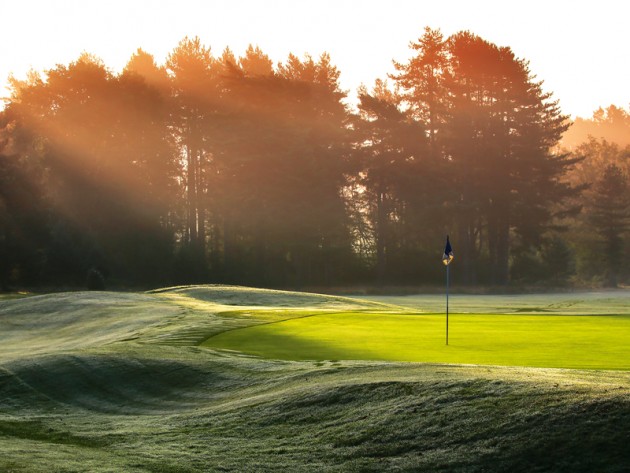
All photography: Kevin Murray

Nick Bonfield joined Golf Monthly in 2012 after graduating from Exeter University and earning an NCTJ-accredited journalism diploma from News Associates in Wimbledon. He is responsible for managing production of the magazine, sub-editing, writing, commissioning and coordinating all features across print and online. Most of his online work is opinion-based and typically centres around the Majors and significant events in the global golfing calendar. Nick has been an avid golf fan since the age of ten and became obsessed with the professional game after watching Mike Weir and Shaun Micheel win The Masters and PGA Championship respectively in 2003. In his time with Golf Monthly, he's interviewed the likes of Rory McIlroy, Justin Rose, Jose Maria Olazabal, Henrik Stenson, Padraig Harrington, Lee Westwood and Billy Horschel and has ghost-written columns for Westwood, Wayne Riley, Matthew Southgate, Chris Wood and Eddie Pepperell. Nick is a 12-handicap golfer and his favourite courses include Old Head, Sunningdale New, Penha Longha, Valderrama and Bearwood Lakes. If you have a feature pitch for Nick, please email nick.bonfield@futurenet.com with 'Pitch' in the subject line. Nick is currently playing: Driver: TaylorMade M1 Fairway wood: TaylorMade RBZ Stage 2 Hybrid: Ping Crossover Irons (4-9): Nike Vapor Speed Wedges: Cleveland CBX Full Face, 56˚, Titleist Vokey SM4, 60˚ Putter: testing in progress! Ball: TaylorMade TP5x
-
 Volvo China Open 2025 Picks, Odds And Predictions
Volvo China Open 2025 Picks, Odds And PredictionsFollowing a break for The Masters, the DP World Tour returns for the final two weeks of its Asian Swing and the Volvo China Open is the penultimate event
By Jonny Leighfield
-
 Rory McIlroy's Sports Psychologist Explains Why He 'Didn't Talk' To Bryson DeChambeau In Masters Final Round
Rory McIlroy's Sports Psychologist Explains Why He 'Didn't Talk' To Bryson DeChambeau In Masters Final RoundDeChambeau raised eyebrows at Augusta National when claiming that McIlroy wouldn't engage in conversation during the final round of The Masters
By Jonny Leighfield